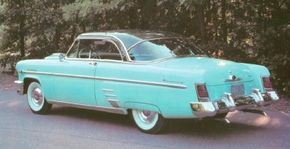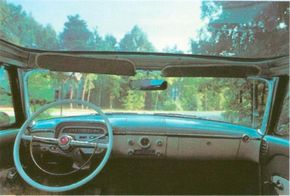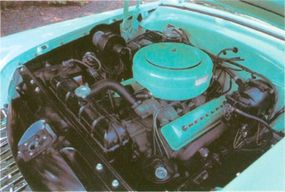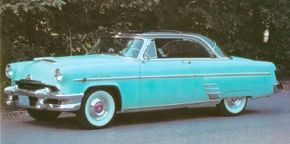The 1954 Mercury Sun Valley was the beneficiary of one of the more memorable advertising campaigns of the 1950s. "The heart of a city at night gleams with its own stars of neon and marquee. This is a magnificent sight ... All the richness and color reaches you. Yet the intensity is softened, filtered by the tint of the plastic roof ...
Advertisement
"You stop for a traffic light. You glance up through the top at the overhead signal. It turns green and you continue your pleasant journey -- completely, wonderfully at ease."
The honeyed words came from a brochure Mercury created for the 1954 Mercury Sun Valley. Together with its counterpart, the Ford Crestline Skyliner, it was the first production car with a roof you could see through. Between the two of them, the "glasstops" found 23,000 buyers in 1954. Though Ford's version outsold Mercury's, the Sun Valley expressed the essence of the idea, the best form it ever took.
Of course, the idea had many antecedents. Designers began thinking about "bubbletoppers" in the late 1930s, as plastic began to be accepted as a structural as well as decorative material.
John Tjaarda, working for body-builder Briggs, developed the first such application -- a one-piece plastic top for a 1939 Plymouth convertible sedan. At Ford after the war, show car predecessors of the 1954 Mercury Sun Valley were the X-100 and XL-500, the latter a 1953 model with a transparent top bisected by a forward-leaning rollbar. As late as 1956, when the last production Skyliners were rolling off the assembly line, Ford exhibited the Lincoln Futura with its twin plastic cockpits.
The 1954 Mercury Sun Valley received ample publicity, claiming "A freshness of view, a new gaiety and glamour, vast new areas of visibility, a whole new concept of light and luxury ... you're comfortably 'out of doors' all year long ... with that wonderful feeling of being fashionably first." Actually, much of this happy puffery rang true, with certain qualifications.
To see how the 1954 Mercury Sun Valley lived up to its publicity hype, go to the next page.
For more information on cars, see:
- Classic Cars
- Muscle Cars
- Sports Cars
- Consumer Guide New Car Search
- Consumer Guide Used Car Search
Advertisement



